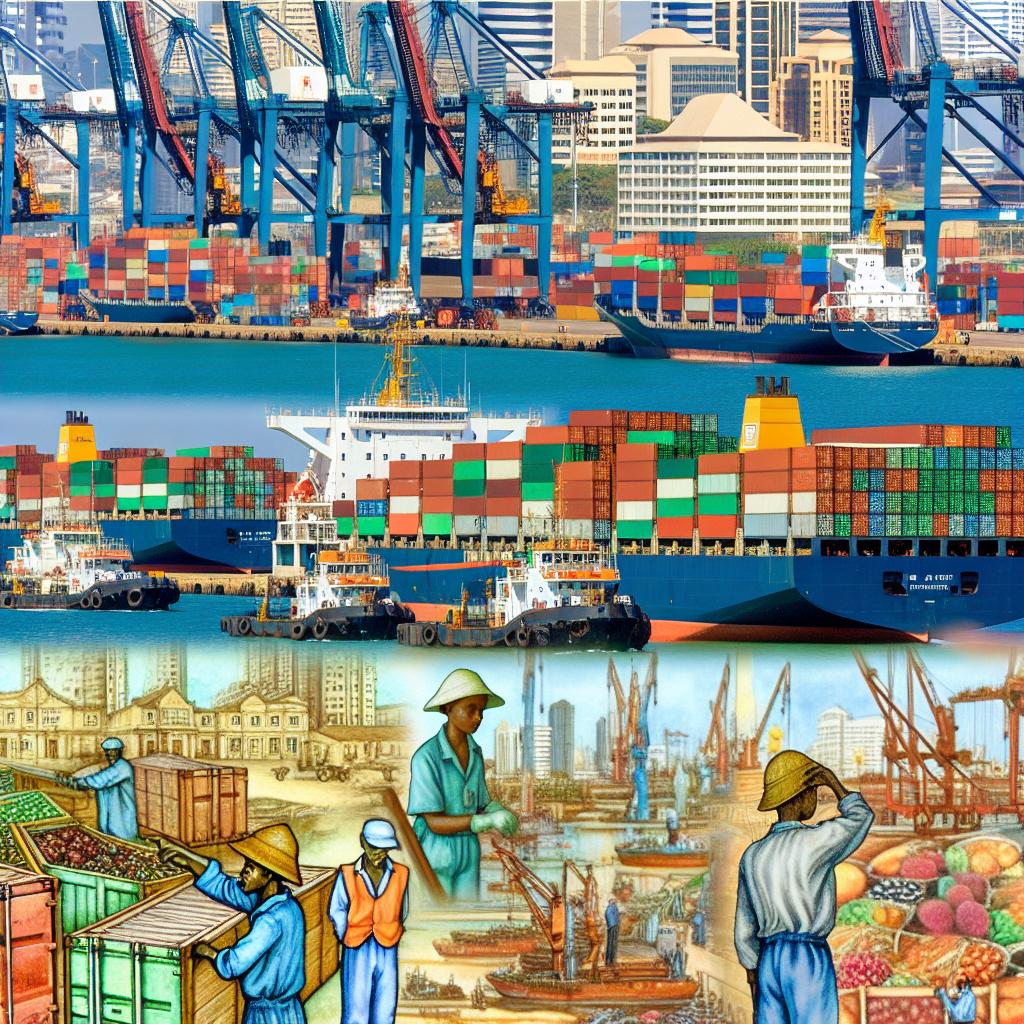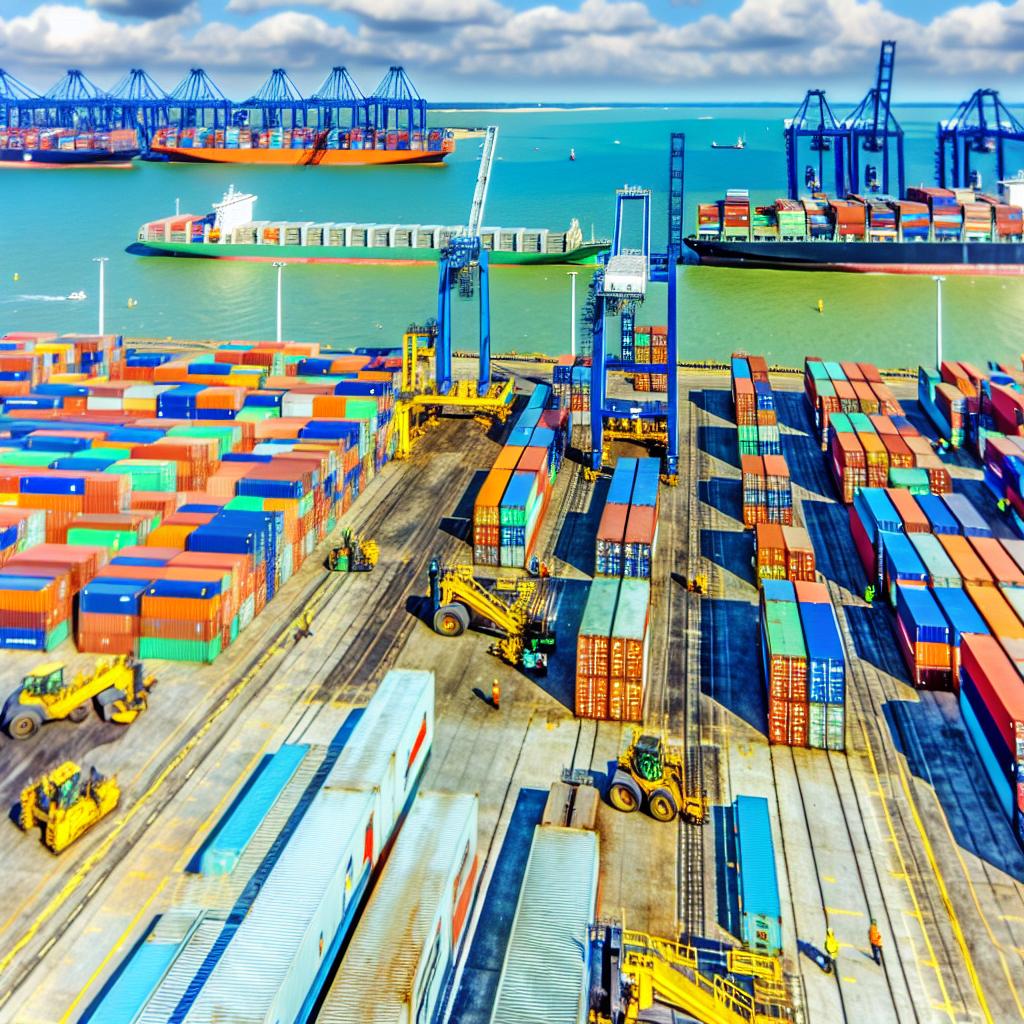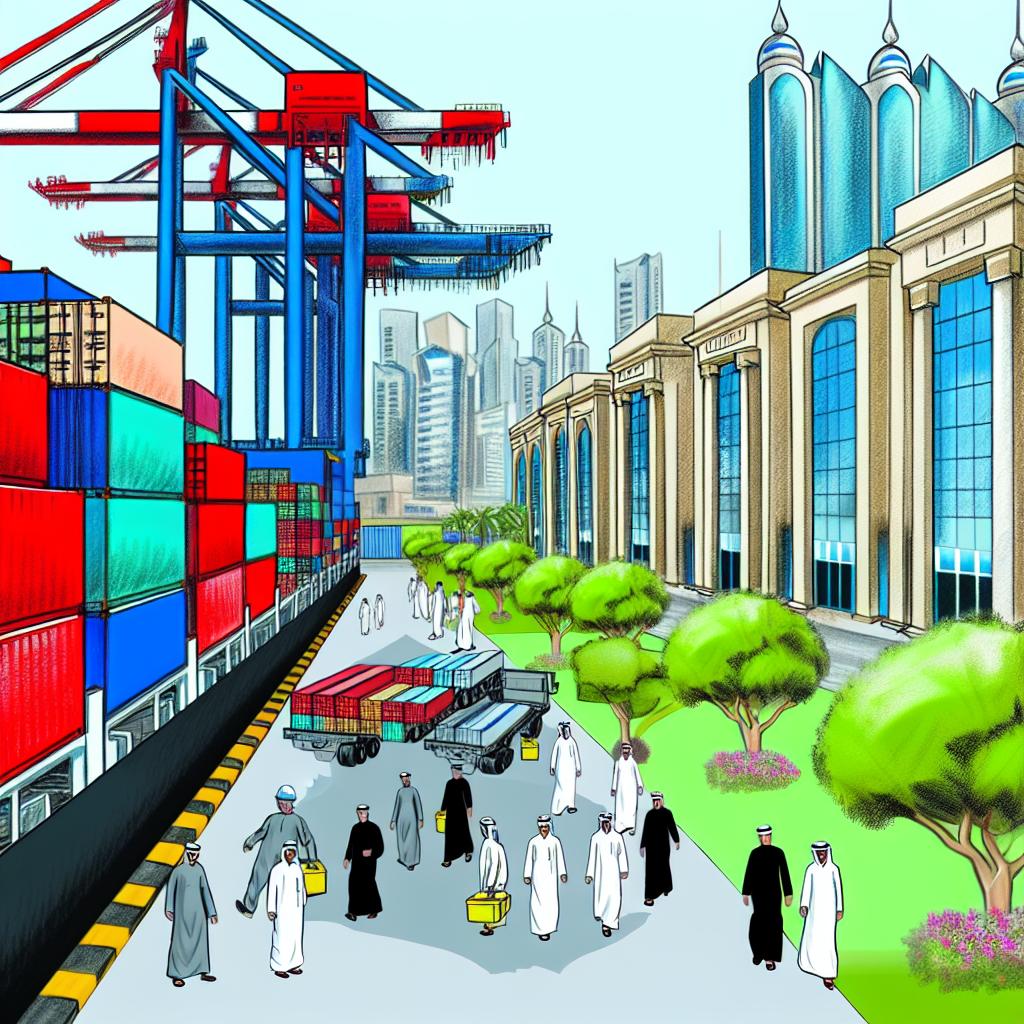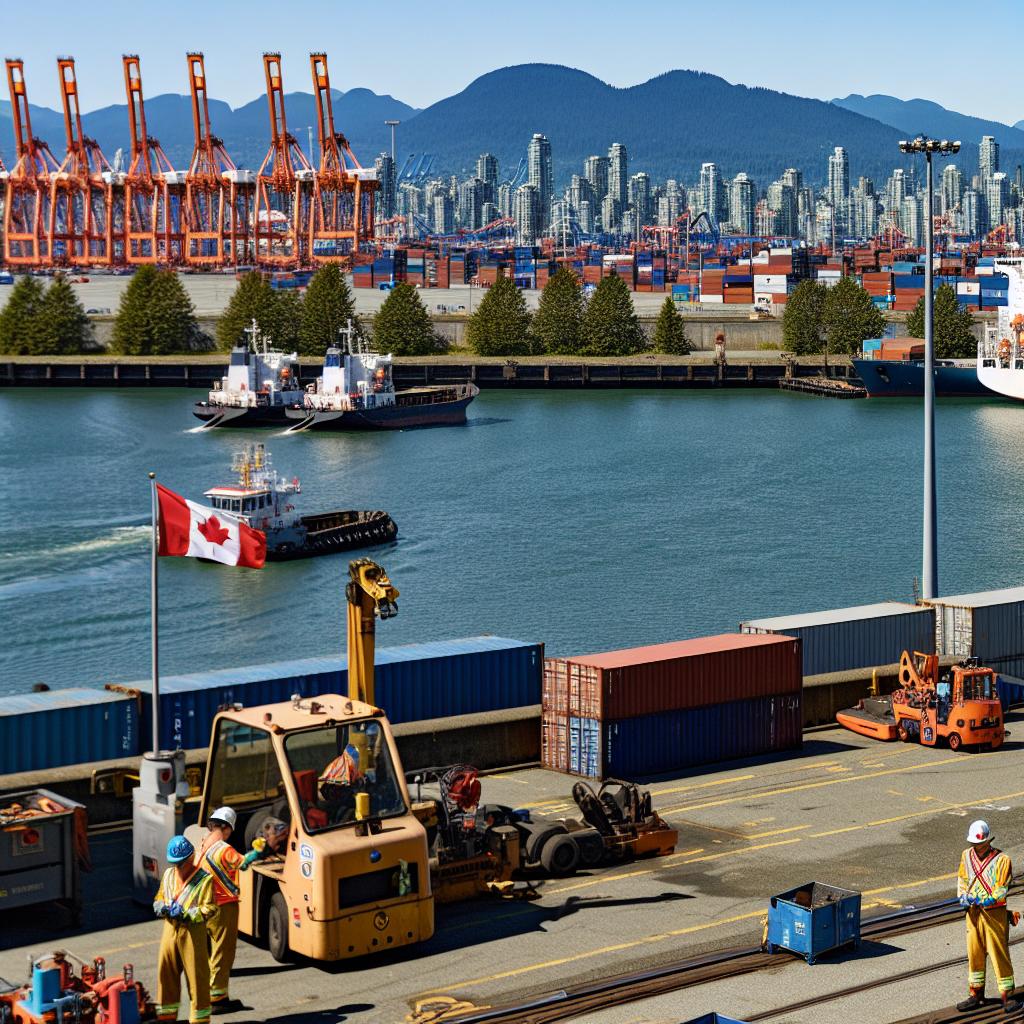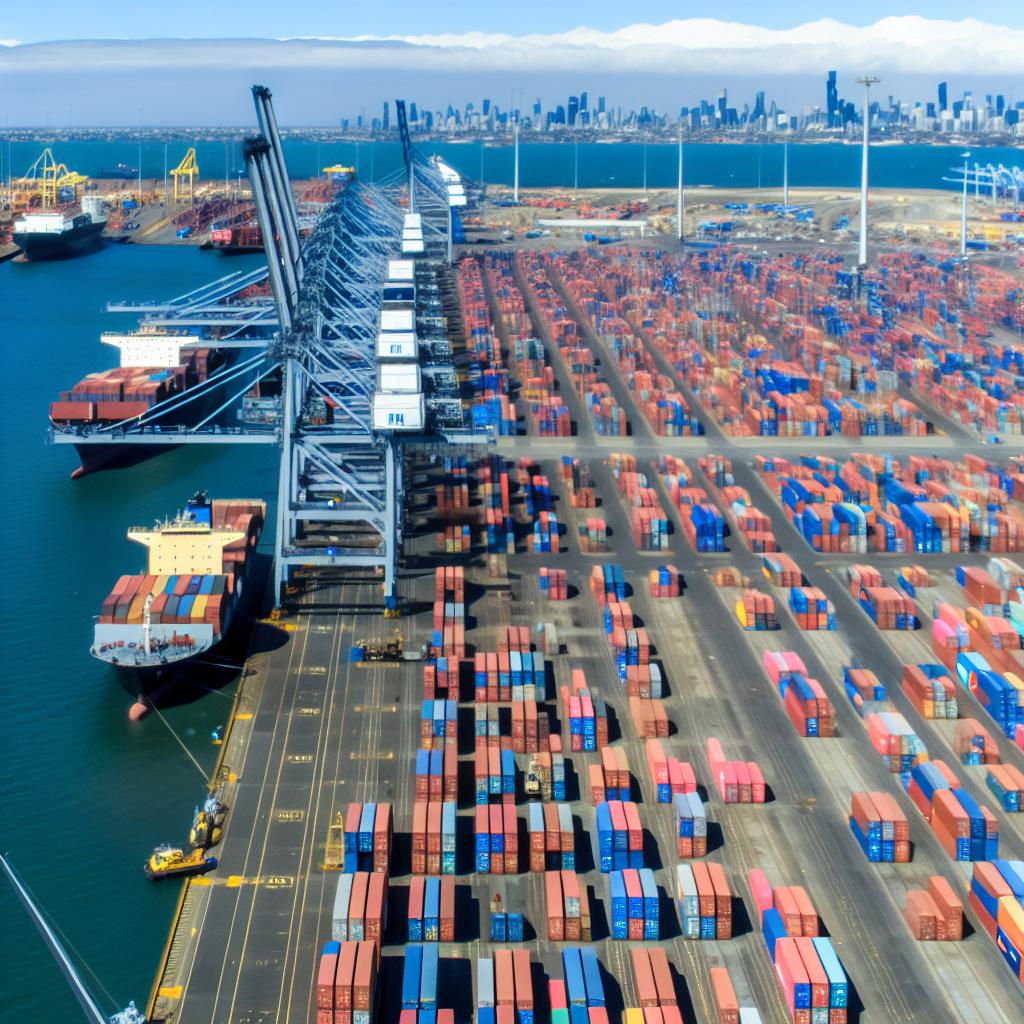The Strategic Importance of the Port of Durban in South African Trade
The Port of Durban, located on the eastern coast of South Africa, is renowned for its bustling activity and modernity, qualities that rank it among the most significant ports on the African continent. Its importance in propelling South African trade is accentuated by its extensive infrastructure and strategic location along crucial global maritime routes. This document will delve deeply into several aspects that make the Port of Durban vital to the continent’s trade and economic landscape.
Geographical Advantage
The strategic placement of the Port of Durban offers substantial benefits, primarily due to its accessibility to essential global shipping courses. Situated along the vast expanse of the Indian Ocean, the port serves as a critical junction for trade connections to the extensive markets of Asia, the Americas, and Europe. This advantageous position facilitates an efficient and seamless movement of goods to and from major economies worldwide, reinforcing South Africa’s trade relationships and providing a bridge between continents.
Advanced Infrastructure
The port’s evolution over the years has equipped it with advanced, state-of-the-art facilities capable of handling a wide range of cargo types. Its infrastructure includes specialized terminals designed to manage containerized, bulk, and break-bulk commodities, thus enabling it to handle high volumes of trade activity with efficiency and precision. Furthermore, ongoing investments aimed at expanding and upgrading the port’s facilities ensure it can meet the growing demands of global trade, focusing on efficiency and capacity building.
Container Handling
Renowned as one of the premier container ports across the Southern Hemisphere, the Port of Durban is equipped with advanced container handling capabilities. The use of high-tech cranes alongside sophisticated logistics systems facilitates the streamlined loading and unloading of containers, which significantly minimizes turnaround times and enhances operational efficiency. This proficiency in container handling positions the port as a pivotal player in optimizing the supply chain network.
Bulk and Break-Bulk Capabilities
Beyond the realm of containerized goods, the Port of Durban adeptly manages substantial volumes of bulk and break-bulk cargo. This encompasses critical commodities such as coal, grain, and automotive parts, each of which supports key industries within South Africa and beyond its borders. The port’s ability to efficiently handle varying types of cargo underscores its versatility and adaptability to the demands of modern trade requirements.
Economic Impact
The Port of Durban holds a crucial place in South Africa’s economic framework. Beyond merely facilitating international trade, it serves as a catalyst for local economic activity by creating employment opportunities and sustaining auxiliary industries. The logistics, warehousing, and transportation sectors, in particular, reap significant benefits from the port’s operations, boosting regional development and economic diversification throughout the area.
Job Creation
A notable contribution of the port lies in its capacity for generating direct and indirect employment opportunities. As a significant source of livelihoods, the port supports a myriad of jobs across various sectors, including logistics, shipping, and customs brokerage. These roles are essential to the day-to-day operations at the port, and they extend their impact into the surrounding communities by promoting economic activity and stability.
Support for Local Businesses
Local businesses, particularly those engaged in manufacturing and export, derive substantial benefits from the operational prowess of the Port of Durban. The port grants them seamless access to international markets, fostering their growth potential and enhancing their competitiveness on a global scale. As a reliable partner in export endeavors, the port aids in elevating the profiles of South African products internationally and driving business expansion.
Challenges and Developments
Despite its impressive achievements, the Port of Durban faces several hurdles, including congestion issues and environmental concerns. South African maritime authorities and port management are actively addressing these challenges to improve the port’s overall efficiency and sustainability. Various initiatives are underway, such as infrastructure expansion projects and the adoption of advanced technology to enable smarter logistics processes. Moreover, focused efforts to minimize the environmental footprint of port activities are pivotal in ensuring that the Port of Durban continues to be an integral component of South African trade for years to come.
In summary, the Port of Durban transcends its role as a mere facilitator of trade; it is a vital component of South Africa’s economic tapestry. Its strategic position, advanced infrastructure, and substantial economic contributions collectively underscore its status as a powerhouse of trade activity, both nationally and internationally. The port’s influence extends far beyond its immediate geographical confines, serving as a driving force that propels economic interconnectivity and commerce on a global scale. In maintaining its status through progressive development and strategic innovation, the Port of Durban ensures its continued significance in shaping the economic aspirations of South Africa and beyond.
